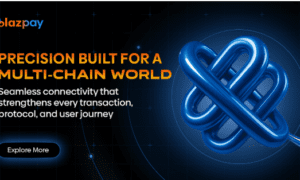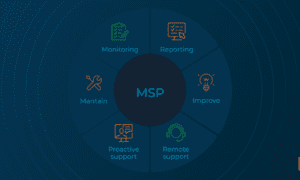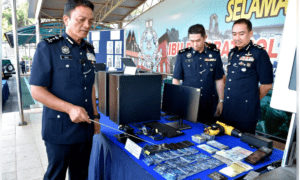In 2025, warehouse robotics isn’t a pilot anymore, as they are becoming core infrastructure. For retailers, engineering execution and automation have become one more area of competition. For instance, in August 2025, British retailer Marks & Spencer committed a massive investment to a fully automated national distribution center. In the US, Walmart continues to develop its automation solutions, expanding them to fulfill grocery orders. Similar developments happen in many countries across the world. However, despite increasing proliferations, implementing automation remains a complex engineering problem with no universal answers.
To find out what makes automation solutions successful, we’ve spoken to Franky Joy, a Team Lead at Lane Automotive, where he turns high-complexity programs, such as automation and API ecosystems, into measurable gains. Over a 18-year career spanning Perot Systems/Dell, Experian, UBS, Cartus, and Lane, Franky has earned recognition, including the UBS Wall of Fame, Dell Bronze, and Dell Champion awards, as well as becoming a Senior Member of IEEE, member of Forbes Technology Council and Raptors Fellow, with his recent work helping Lane secure industry accolades for automation productivity. His innovations were honored by Cases&Faces Award for Achievement in Technology Innovation and Global Tech Awards for Robotic and Automation Technology (Robotech), illustrating his valuable contribution to the industry.
Throughout your career, you have implemented multiple complex engineering systems, from creating a Risk Analysis Platform at Experian to developing robotics and automation solutions for your current company, Lane Automotive, a leading distributor of high-performance car parts, with over half a century on the market. The latter earned your company industry recognition for automation leadership, including SEMA Warehouse Distributor of the year award. Looking across those environments, what are the main features of complex projects that are necessary to understand to implement them successfully?
Complex systems can be seen as a concurrency of moving parts: they involve several layers of interactions involving multiple parties, as well as the requirement to adapt to shifting requirements and ensure integrations with legacy systems. To innovate successfully in such environments, I start by aligning a project with a clear business goal and rely on tighter feedback loops that allow me to quickly determine what is working and what isn’t, and correct mistakes. An important part of implementing complex systems, from the Experian risk analysis platform to warehouse robotics, is finding the right metrics that truly matter and using them consistently.
In your current role, as a Team Lead at Lane Automotive, you have already implemented several projects. Besides the warehouse automation solution, you led the development of the PriceGuidePro B2B Platform, which was widely adopted across dealers and got recognition and PRI Trade Show. How do you determine which aspects of the company’s operation will benefit from the automation the most, and how do you determine the next direction?
One of the ways to determine the next area for innovation is to look for bottlenecks that affect business operations and can be improved. For instance, for warehouses, there could be slow picking or packing times that slow down the entire process, and for a B2B platform, the demand for navigating complex catalogues. It is crucial for determining the next direction to rely not on assumptions but on data, and the data can be obtained from various sources, including usage analytics, support tickets, and field feedback.
Warehousing is one area where automation offers easily observable benefits. At Lane, you integrated over half a hundred Exotec Skypod robots into a warehouse management system, achieving a sixfold decrease of order processing time, as well as reduction of manual labor. In addition, a smart packaging solution was introduced to further cut shipping costs, resulting in increasing sales thanks to a more competitive pricing. How do you introduce such massive and innovative changes into the processes without breaking operations?
Massive stages are introduced in phases, so they do not disturb the continuous operation. Ideally, one value stream should be integrated at a time, and fallbacks should remain in place until the system operates with stability. It is also crucial to invest in training, so employees have a clear understanding of the changes. Staged rollout, instrumentation, and operator training are key components, no matter what industry the innovative solution is applied in.
Your projects for Lane Automotive are of particular interest to anyone interested in implementing automation solutions. They are designed for a specific high-pressure segment, with its specific challenges, such as the necessity to navigate complex part catalogs with multiple manufacturers, fitting data, and other parameters. Currently, your API is widely used across the industry by service centers, dealerships and manufacturers. What lessons can be drawn from your work on PriceGuidePro and Motostate Web API that are translatable to other industries?
While developing the project, we focused on the features specific to the particular industry. In our case, racetracks and parts providers need instant fitment and ordering, so we chose a mobile-first flow, providing dealers and drivers with a convenient way to find and order parts. The app included several features helping to place and process orders quickly, such as barcode scanning to identify parts swiftly, multi-cart, and dealer-specific pricing. The main lesson that can be taken from here is that you need to build with peak workload in mind, so your system doesn’t break under pressure.
The systems you designed proved resilient not only during normal operation but also when facing unexpected circumstances: your team was able to recover over thirty mission-critical applications within a week, swiftly resuming order processing and ensuring the quality of customer service. What approach helped you create a system that was able to recover quickly, and what advice would you give to developers who aim to build resilient systems?
When a crisis of this scale happens, the primary goal is to restore the revenue path first. In this case, we focused on returning critical apps necessary for warehouse operations and order processing. Even in the case of some unexpected scenario, the recovery will go smoothly if it was planned for in advance: know what structures are essential for the operation of your business and train your team to recover and restore it in case of various failures.
In the course of your career, you have amassed vast and diverse experience, which was partially presented in your articles and case studies, currently used by major eCommerce platforms such as Amazon, Walmart, and Shopify to illustrate best practices of API integrations. What ways of providing guidance to others do you find especially important, and how do you integrate them into your work?
There are several channels I use to make my knowledge actionable. The first one, as you have mentioned, are integration guides and case studies, which provide valuable examples to other businesses developing their integrations with e-commerce platforms. In addition, I regularly conduct in-house training and mentorship programs, teaching others best practices and ensuring that engineering teams are able to operate productively.
In addition to writing case studies and conducting training, you also serve as a jury member for several major industry events and awards, including the Global Recognition Awards, Hackathon Raptors, and Business Intelligence Group. What motivates you to take on these roles, and what value do you see in being part of judging panels?
Participating on jury boards allows me to stay close to the edge of innovation. You see what problems people are trying to solve, which technologies are gaining traction and how creative teams are applying them. It’s also a way to give back to the community. When you evaluate someone’s work seriously, you’re not just describing who wins, but help to set a direction for what excellence looks like. For me, participating at jury boards creates a constant learning loop, as to stay sharp you need to see many different approaches up close.
To conclude, considering the rapid technological advancements of recent years, what advice would you give to developers who want to build systems that are built for the future, not just for solving current tasks?
Future-ready systems start with stable structures and strong security, and industry-specific solutions should be used where possible instead of general-purpose ones. Building on the foundation of actual data is essential because to scale your business, you must see what exactly you are scaling. If you can measure impact and change direction quickly when needed, the system will stay useful as technology and business needs evolve.





























